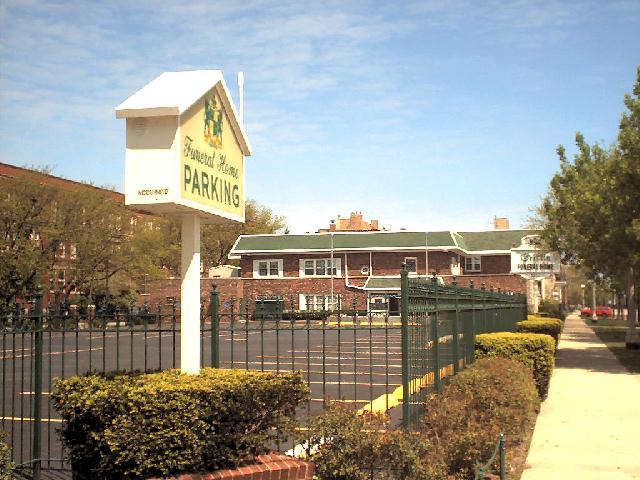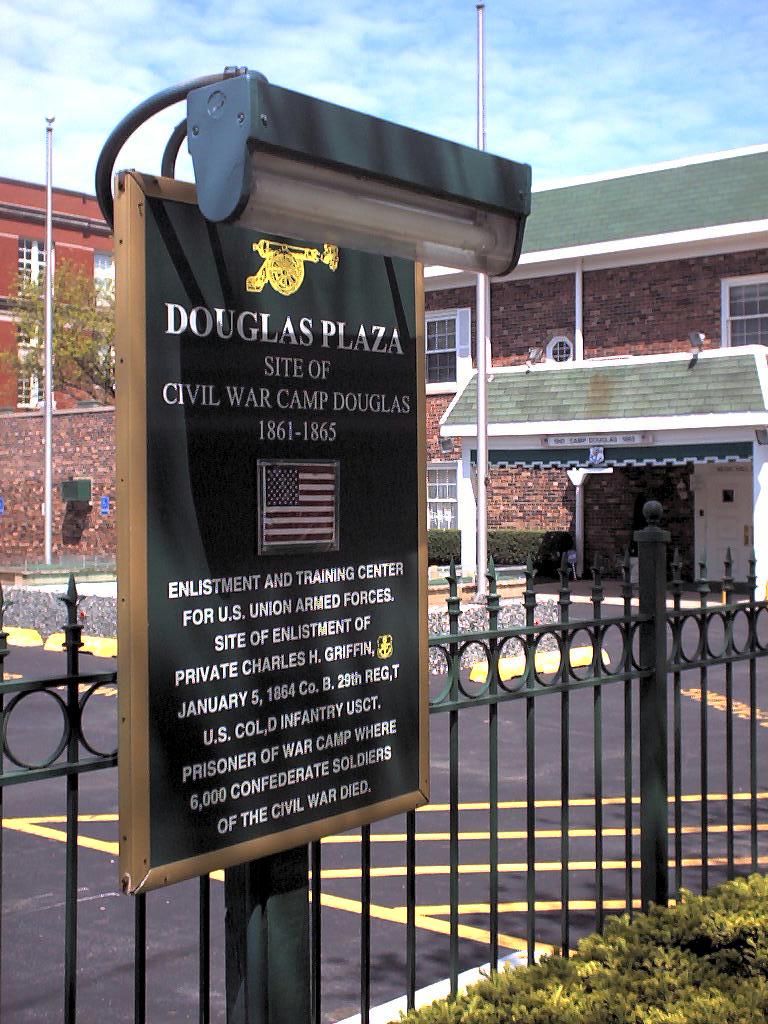

2003 NB
|
|
The
Griffin Funeral Home sits on the site of Camp Douglas, a morbidly fit marker
of one of the deadliest prison camps of the Civil War. A
sign says a soldier named Charles H. Griffin enlisted here in the U.S.
Colored Infantry; almost as an afterthought it mentions the thousands of
Confederate prisoner deaths. This
Web site says his grandson, Captain Ernest A. Griffin, was born on
the property.
In February
of 1862, Ulysses S. Grant captured Fort
Donelson in Dover, Tennessee. It was the North's first major victory
and earned Grant a promotion to major general. It was also a blow to the
South, keeping Kentucky in the Union and giving the North an opening into
Tennessee (where they made Nashville a key supply depot). About 8,000 Confederate
soldiers captured at Fort Donelson were the first prisoners to arrive at
Camp Douglas in Chicago.
The camp was
originally a Union training base located at 31st
and Cottage Grove. The land belonged to Stephen Douglas (of the Lincoln-Douglas
debates), who died less than a year before the capture of Fort Donelson.
The prisoner camp was located here on the west side of Douglas' estate,
along what today is King Drive.
Conditions
were miserable at Camp Douglas, which housed a total of 26,000 prisoners
in the last three years of the war, including Sam Houston Jr. and eventual
African explorer Sir
Henry Morton Stanley. Prisoners were punished for trivial offenses
by being thrown into the pitch black basement room of "the white oak,"
a small house made of white oak logs. Smallpox and dysentary spread through
the camp, killing one in five prisoners, a total of 6,000. The more than
1,000 deaths at Douglas during the brutal winter of 1864 drew comparisons
to Georgia's notorious Andersonville.
Chicago detective
Allan
Pinkerton, who founded the Secret Service for Abraham Lincoln, got
wind of a plot among the prisoners to revolt and claim Chicago for the
Confederacy and broke it up.
The prisoners
who died at the camp were initially buried in what is now the southeast
corner of Lincoln Park. Two years after the war, the remains were moved
to Oak Woods
Cemetery a few miles south of the camp, where a monument stands today.
At the Griffin
Funeral Home, a display exhibits weapons and other mementos of the Civil
War. -NB
-Facts
about Camp Douglas from IllinoisCivilWar.org
-Picture
of Camp Douglas during the war
-Diary
of a prisoner at Camp Douglas
-More
from genealogy portal CensusDiggins.com |